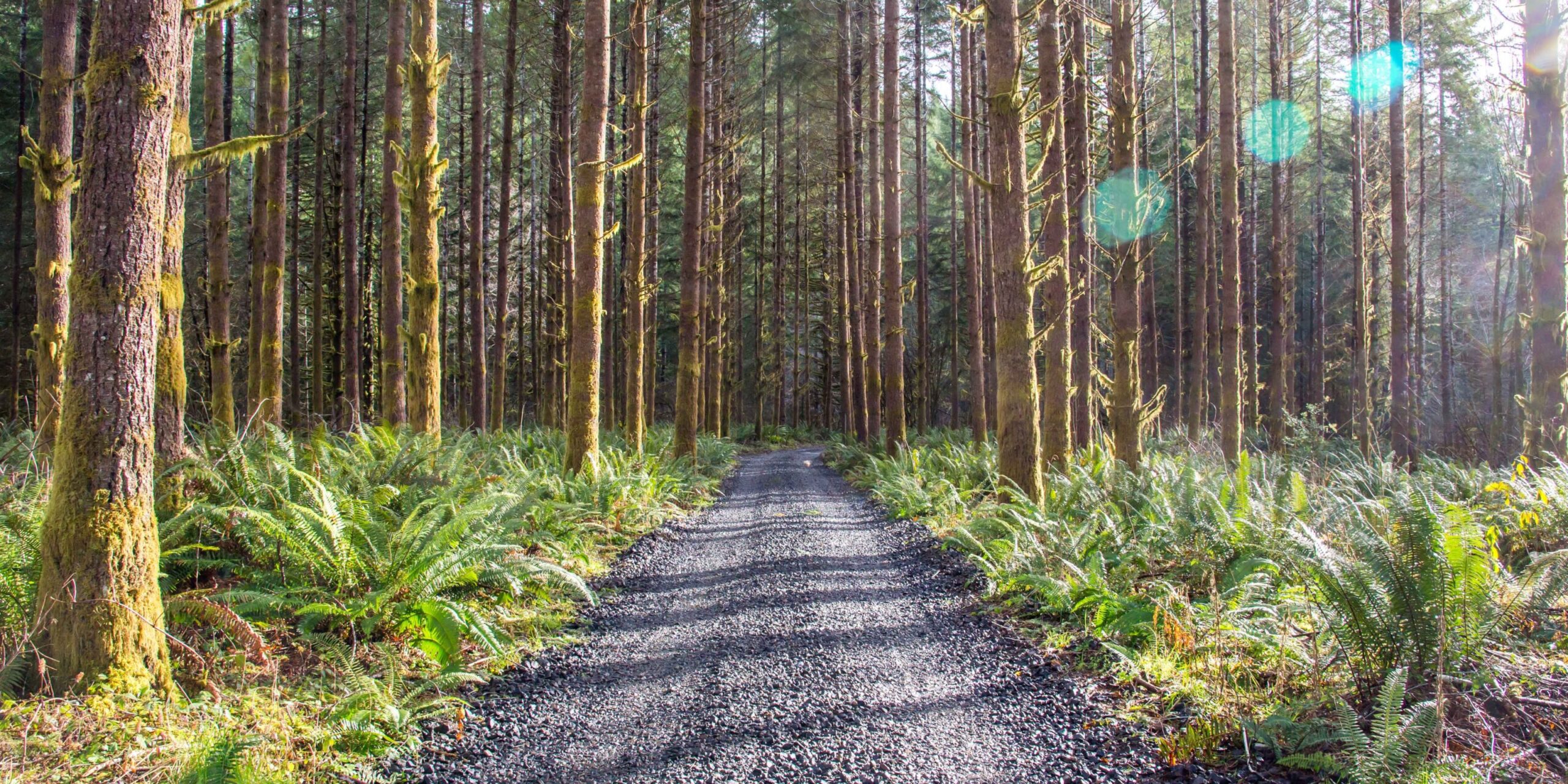
Work. Play. Renew.
Why Are Forests Cooler Than Open Areas?
Forests are integral to regulating temperature and have a profound effect on local climate. When forests thrive, so do the surrounding ecosystems, improving the quality of life for all inhabitants within. Without the help of these hard-working forests, the earth’s temperatures may continue to rise, as they are a primary defense against heatwaves and other extreme weather events. Wooded areas are important for maintaining cool air and water temperatures. Fortunately, effective forest management keeps these spaces healthy and thriving, playing a critical role in maintaining our cool forests.
Let’s dig deeper into these wooded areas to discover their importance and the part we can play in protecting them. We’ll start by answering two important questions: why are forested areas cooler, and how do they regulate temperature?
Cool Forests and Their Cooling Phenomenon
Trees and other plants help to lower the temperature of their surroundings through evapotranspiration. Evapotranspiration is the combination of the processes of evaporation and transpiration. When trees, shrubs and tall grasses absorb water through their roots, they release water vapor into the air through their leaves. This is called transpiration, and it cools the area around the vegetation. Through evaporation, rainfall accumulates on soil and leaves, cooling temperatures nearby. Together, evaporation and transpiration keep forests and the surrounding environment cool.
Evapotranspiration helps to keep water, surface and air temperatures cooler, which can greatly benefit nearby ecosystems, neighborhoods and communities. When trees are strategically planted near houses, offices, shopping centers and other buildings, these structures can reap the same benefits of cooler air and shaded surfaces.
Using Cool Forests to Reduce the Planet’s Heat
Cool forests aren’t just important to the environment in their immediate vicinity. Since they have a regulating effect on temperature, as a whole, they can have a larger impact on the global climate.
One of the most well-known ways trees help cool the planet is through the regulation of greenhouse gases through their storage of carbon dioxide. More forests mean more capacity for carbon storage. Greenhouse gases absorb and radiate heat in the earth’s atmosphere.
Some amount of greenhouse gases is necessary to maintain habitable temperatures, but too much can make the planet too warm. As more carbon is released into the environment through the use of fossil fuels, balancing those emissions becomes essential, and forests can help. Reforestation efforts can help reduce the amount of greenhouse gases in the environment, providing an overall cooling effect. There are other non-carbon effects that play a key role in cooling the planet too.
The surface roughness of forests also helps with cooling. The uneven, dense vegetation of a forest canopy affects wind speed, creating turbulence. The same turbulence works to lift moisture and heat away from the surface of the earth, cooling it down.
Aerosols, tiny particles like pollen, are created by forests and interact with the atmosphere along with chemical compounds produced by trees. These interactions in the atmosphere can change ozone and nitrate concentrations, affecting cloud formations and changing their color. Aerosols scatter light, changing the earth’s reflectivity and altering the climate through cloud formations. Aerosols work against the effects of greenhouse gases, causing cooling. These brighter clouds block sunlight from the earth’s surface, providing shade for the planet and creating a net cooling effect.
Managing Climate With Managed Forests
Since forests are important for the climate, it is essential for them to thrive and maintain their cooler temperatures. Humans can help through forest management. Forest management strives to keep forests healthy, fruitful and able to perform important functions such as evapotranspiration and carbon storage.
Effective forest management requires the public and professionals to work together to ensure the sustainability and stewardship of forests. Forest management activities can include road construction and maintenance, responsible timber harvesting and reforestation and fire management efforts, such as thinning and controlled burns, to name a few. These methods and more keep forests healthy so they can thrive for many generations. Without such actions, forests are left without safeguards, and this can drastically impact water quality, wildlife and more.
Added Benefits of Managed Forests
In addition to keeping the earth’s surface, waters and air temperatures cool, managed forests work to:
- Prevent wildfires from harming human life, surrounding property and renewable resources such as timber.
- Sustain wildlife habitats through intentional biodiversity. Maintaining different forest types ensures all wildlife, including fish and aquatic species, have the habitat they need to flourish. Young forests and old forests alike are home to many different species, all are necessary for a thriving ecosystem.
- Reduce devastating wildfires through controlled burning, thinning and mechanized harvest—while keeping roads well-maintained and safe for firefighters.
- Provide renewable building materials. Trees can be replanted once harvested and a new supply of building materials is grown. Many alternative building products are not renewable and are gone forever once used.
- Reduce carbon emissions by creating a sustainable cycle of planting, cultivating, harvesting and replanting trees. As we’ve discussed, trees absorb large amounts of carbon from the atmosphere, providing a solution to climate change. Forest management utilizes the understanding that younger trees need room and energy to grow, without competition from older trees. When older trees, which already have lots of stored carbon, are selectively harvested, younger trees grow and absorb carbon faster.
- Protect forest streams that are habitats for aquatic species and critical spawning areas for fish, all while improving the quality of water by leaving large no-harvest zones next to streams to help provide shade and keep water cool and clean.
Oregon Forests Forever believes we all should see the forest for the trees. Learn how you can help Oregon’s forests thrive by joining our coalition of individuals, organizations and businesses. Let’s work together to support active management of our Oregon forests!